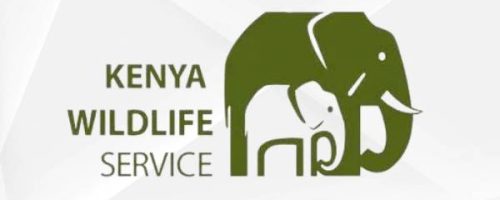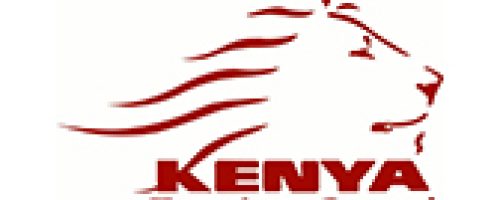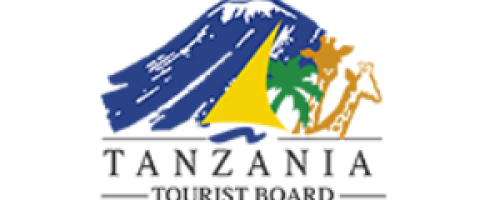| Name of the facility | Ol Seki Hemingways |
|---|---|
| Certification Achieved | Silver |
| Year opened | 2005 |
| Tourism region | Masai Mara/South Rift |
| County | Narok |
| Address | Naboisho Conservancy within the Mara ecosystem Map It |
| Telephone/Mobile | +254 718 669856 |
| [email protected] | |
| Website | hemingways-mara.com |
| Facility Notes | Ol Seki Hemingways Mara is located in Naboisho Conservancy within the Mara ecosystem. The camp was established in 2005 and is currently operated by Hemingways Limited. It is uniquely built and blends in with the local environment. The facility consists of 10 double tents with a bed capacity of 20 guests and a total work force of 30 employees for its operations. The Mara Naboisho Conservancy is a community conservation area measuring approximately 50,000 acres in size. Naboisho is a Maa word that means “coming together”. The Conservancy was established in the year 2010 when about 500 local individual Maasai landowners agreed to lease their land for 15 years to tourism investors. The aim was to conserve the land and wildlife, whilst simultaneously creating wealth for the landowners through tourism enterprises. The Conservancy is an integral part of the Mara-Serengeti ecosystem, and provides critical wildlife dispersal area for migratory wildlife, including the wildebeest. The Mara portion of the larger Mara – Serengeti ecosystem supports approximately 92 species of mammals and about 400 species of local birds. It is the largest high altitude grassland in East Africa and hosts the largest population of the migratory Caspian Plover. The conservancy supports wildlife conservation through undertaking applied research studies to improve human-wildlife interactions. There are on-going study programs on lions, elephants and cheetahs. |
| Energy management | The camp’s main source of power is provided by two (2) generators with power out of 40KvA each. They provide power for lighting and running electrical appliances. Power rationing is conducted for at least eight hours daily for energy conservation. Generator fuel consumption is recorded daily to monitor usage. Energy saving bulbs and Light emitting diodes (LEDs) are used throughout camp to enhance energy conservation. Liquefied Petroleum gas (LPG) is used for guests and staff cooking. The camp uses briquettes for the boilers used for water heating in the guest tents. Guests and staff are sensitized on energy conservation such as switching off unnecessary lights through briefings |
| Environmental management | Ol Seki Hemingways has an environmental policy which outlines their commitment to conservation, preserving and protecting the local environment and promoting proper water and energy resource use. In addition it conducts an annual self-environmental audit has been conducted as required by the Environmental (Impact Assessment and Audit) Regulations, 2003. |
| Chemical use | Biodegradable bathing soaps, shampoos and laundry soaps are used within the camp. Fuel (Diesel) is stored in a 5,000 litre reservoir and the storage area well enclosed. |
| Conservation Criteria | |
| Community Criteria | |
| Solid waste management | Waste separation is conducted at source through clearly labeled bins. Organic waste composted while inorganic waste is put at a waste collection centre for further segregation before disposal through Nairobi to recycling companies. The camp has an innovative initiative for recycling glass wine bottles which are converted to drinking glasses. |
| Water management | The main source of water for the camp is obtained from a borehole. It is treated and stored in reservoirs with a total capacity of 12,000 litres and distributed via gravity to the entire premises. For efficient water use low shower filter heads are installed for the guest tent showers and guests are encouraged to conserve water through ‘towel talks’ in the tents. The guest toilets are fixed with water efficient dual toilet cisterns. Visitors are sensitized on water conservation through room information folders and staff through sensitization |
| Visitor communication & education | Visitors are briefed upon arrival on the camp’s operations and environmental values. The guest tents are equipped with detailed room information folders to brief the visitors on environmental conservation, Naboisho Conservancy, the Masai community and operations of the camp. The Camp also has an extensive resource centre and library also open to visitors. |
| Pollution | The pathways are lit with low wattage bulbs at night to reduce on light pollution. |
| Environmental conservation | The camp is located within the Naboisho Conservancy and plays a significant role in the conservancy operations by paying monthly conservancy lease, and bed night fees. The facility conducts low environmental impact activities such as nature and game walks, bird watching and village visits with a qualified camp guide for its visitors. The activities are aimed at sensitizing the visitors on the surroundings.The Camp’s architectural design blends well with the local surrounding. The guest beige canvas tents are raised on low impact platforms. Also, footpaths are demarcated using gravel stones. The natural vegetation is relatively undisturbed. The facility is unfenced thus allowing free movement of wildlife |
| Waste water management | Effluent from the laundry, guest rooms and staff quarters is managed through soak pits. Black water from the guest tents and staff quarters is managed through septic tanks. EM1 (Effective Microorganisms) is added to enhance sludge digestion. Effluent tests have been conducted in compliance with Environmental Management and Coordination (Water Quality) Regulations of 2006. |
| Purchasing and supplies | Fruits and Vegetables are packed in reusable crates while meat and dairy products are stored in freezers. Dry goods are bought in bulk where possible to reduce on packaging material |
| Employment and remuneration/staff welfare | The facility has a staff welfare committee that meets regularly to deal with staff issues with the management. |
| Staff education, communication and awareness training | The staff is sensitized and briefed during departmental/daily briefing meetings. |
| Cultural preservation and promotion/protection of local sites | On special occasions such as bush dinners, the camp engages the staff to entertain guests on traditional dances and cultural performances. The staff is provided with extra allowance for it. Ol Seki Hemingways Camp also promotes guest visits to the local village as a cultural experience. The camp pays the village Kshs 1500.00 per visit and encourages the purchase of curios from the village. The local camp guides and room stewards also interact with guests concerning local Masai culture, values and traditions. |
| Benefits to local community/community empowerment | The camp provides employment opportunities to the locals- all the casuals are hired from the local community. About 75% of the permanent employees are hired locally. In addition, purchases such as staff meat are bought locally where possible. Ol Seki Hemingways pays conservancy, lease and bed night fees to Naboisho conservancy and land owners respectively. As at July 2015, a total of KES. 11,980,080 were paid. A Land owner airstrip fee is paid amounting to Kshs 115,763.00 per year The camp also contributes to Naboisho Trust which runs all the conservancy community projects on health and education. It further supports Koiyaki Guiding School by providing attachment opportunities to Hemingways properties. |
| Cultural Criteria | |
| Health and safety | Ol Seki Hemingways has a detailed and clearly communicated Health and Safety Policy and manual in place which acts as a comprehensive guide on safety procedures at the facility. In addition, the facility has a health and safety Committee that spearheads environmental, health and safety issues. The camp has undergone Health Inspection and medical check- ups (every six months) and issued with a Health Inspection Certificate and food and beverage handlers cleared. The camp subscribes to Flying Doctors services and charter air services can be provided for emergency response. Medical check-up for staff is referred to Nkoilale community health centre. There is a doctor on call for emergency response. The camp has an emergency and fire evacuation plan with clear spelt out procedures on health care and security emergency contacts placed in all guest tents. Fire-fighting skills training for the staff and fire drills conducted The facility provides protective gear / PPE (Personal Protective Equipment) such as boots, uniform, gloves, apron to the staff. A fire assembly point and a fire alarm are fixed. In addition, an emergency procedure/plan for the facility showing nearest fire assembly point is available |
| Child labor, abuse and human rights | The facility does not employ any person below the legal working age of 18 years. |
| Business Practises Criteria | |
| Entry Date | 13th March 2018 |
Ol Seki Hemingways
Book your Africa safari holidays in Kenya, Tanzania, Zanzibar, Uganda & Rwanda with Adeli Kenya Safaris
Your dream safari / holiday is just a call or email away. Contact Adeli Kenya Safaris today. Tel: +254720564538 | WhatsApp: +254720564538 | Email: [email protected]
EXPLORE OUR FEATURED SAFARI HOLIDAYS
FEATURED TOURS & HOLIDAY PACKAGES BY COUNTRY
Menu
Adeli Kenya Safaris, best tour company in Kenya, best safari company in Kenya, best tour operator in Kenya, best travel company in kenya, best travel agency in kenya, best kenya safari company, nairobi safaris, nairobi kenya safaris, kenya safaris, safari in kenya, kenya wildlife safaris, kenya safari tour, kenya tours, Best responsible tours and travel agency in kenya, Best responsible tours and travel company in Tanzania, Best responsible tours and travel company in Zanzibar, Best responsible tours and travel company in Uganda, Best responsible tours and travel company in Rwanda, Best responsible tours and travel company in Botswana, Best responsible tours and travel company in Namibia, Best responsible tours and travel company in South Africa, Best responsible tours and travel company in Mauritius, Best responsible tours and travel company in Seychelles, Best responsible tours and travel company in Madagascar, Best responsible tours and travel company in Mozambique, Best responsible tours and travel company in Egypt, Best responsible tours and travel company in Israel, Best responsible tours and travel company in Thailand, Best responsible tours and travel company in East Africa, Best responsible tours and travel company in Eastern Africa, Best responsible tours and travel company in Africa, Best responsible tours and travel company in the world, Best responsible tours and travel company in Thailand, Best responsible tours and travel company in Malaysia, Best responsible tours and travel company in Croatia, Best responsible tours and travel company in Vietnam, Best responsible tours and travel company in Dubai, Best responsible tours and travel company in Singapore, Best responsible tours and travel company in Brazil, Best responsible tours and travel company in America, Best responsible tours and travel company in Canada, Best responsible tours and travel company in Europe, Best responsible tours and travel company in Greece, Best responsible tours and travel company in Turkey, Best responsible tours and travel company in Faroe Islands, Best responsible tours and travel company in Morocco, What is ecotourism, responsible travel, best green tourism company in kenya, best sustainale travel company in kenya, best ecotourism ompany in kenya, best sustainable travel practices, best things to to do in kenya, best things to to do in Nairobi, best things to to do in kenya, best things to to do in Mombasa, best things to to do in kenya, best things to to do in kenya, best things to to do in Nakuru, best things to to do in kenya, best things to to do in Naivasha, best things to to do in kenya, best things to to do in Maasai Mara, best things to to do in kenya, best things to to do in Kisumu, best things to to do in kenya, best things to to do in Amboseli, best things to to do in kenya, best things to to do in Tsavo West, best things to to do in kenya, best things to to do in Tsavo West, best things to to do in kenya, best things to to do in Samburu, best things to to do in kenya, best things to to do in Tanzania, best things to to do in kenya, best things to to do in Zanzibar, best things to to do in kenya, best things to to do in Uganda, best things to to do in kenya, best things to to do in Uganda, best things to to do in kenya, best things to to do in Rwanda, best things to to do in kenya, best things to to do in Mauritius, best things to to do in kenya, best things to to do in Seychelles, best things to to do in kenya, best things to to do in South Africa, best things to to do in kenya, best things to to do in Mozambique, best things to to do in kenya, best things to to do in Madagascar, best things to to do in kenya, best things to to do in Zambia, best things to to do in kenya, best things to to do in Israel, best things to to do in kenya, best things to to do in Dubai, best things to to do in kenya, best things to to do in Thailand, best things to to do in kenya, best things to to do in Greece, best things to to do in kenya, best things to to do in Santorini, best Tour Operator in Kenya, bestTour Operators in Nairobi, Tours in Kenya, Travel Agency in Nairobi, safari, kenya safari, kenya tours, tours and travel kenya, eco safaris, ecotourism, eco tourism, responsible travel, green tourism, agro tourism, east african safari air, kenya tanzania tours, africa tours, masaimara safari, tanzania safari, kenya travel, africa safari, nairobi safari, kenya safari tours, african safari, kenya safaris from nairobi, kenya wildlife safari, serengeti safari tour, safar tours & travels, best tour operators, luxury african safari tours, best african safari for seniors, african safari and beach package holidays, africa safari camp, kenya safari packages, kenya safari holidays, uganda safari packages, best places to go on safari in africa, best african safari itinerary, kenya wildlife safari packages, deal africa, travel operators, tour africa safaris kenya, luxury safari company, east african safari packages, safari travel companies, top safari tour operators, african safari travel agent, africa travel deals, trip safari, best safari experience, african safari photography, kenya holidays 2018, kenya safaris from nairobi, kenya safari, kenya holiday packages, kenya holidays, weekend getaways in nairobi, holiday destinations in kenya, weekend getaways in kenya, kenya safari holidays, tours and travel kenya, domestic holiday packages in kenya, kenya safari packages, tour operators in kenya, kenya destinations, kenya holidays 2017, kenya travel, kenya tours, tours and travel companies in kenya, kenya safari tours, safari kenya, kenya holidays 2018, kenya safari prices, holidays in kenya, travel agencies in kenya, dubai holiday packages from kenya, cheap holiday packages in kenya, cheap holiday destinations in kenya, getaways in kenya, kenya safari all inclusive packages, kenya all inclusive resorts, cheap january holiday deals, dubai holiday packages from dubai, vacation places in kenya, affordable holiday destinations in kenya, holiday getaways in kenya, trip kenya, kenya safari beach holidays, kenya safari vacation packages, travel package holidays, best travel package deals, trip to kenya safari, kenya’s best DMC, Kenya’s best tour operator ‘ Kenya’s best travel agency , Africa’s best DMC , Africa’ best tour operator , best kenya tour companies, luxury tour companies in kenya , why I love kenya , #whyilovekenya , join up safaris kenya , budget safaris in kenya , flying packages kenya , beach safaris in kenya , top rated tour companies in kenya , rooftent camping in kenya, safaribookings , tripadvisor, photography safaris in kenya , , best Tanzania safaris , kenya and Tanzania safaris , Tanzania road safaris , Tanzania flying packages, dubai packages , south Africa holiday packages, Seychelles holiday packages , Mauritius holiday packages , easter holiday packages , Christmas holiday packages , Wildebeest migration, kenya wildebeest migration, wildebeest migration kenya, wildebeest migration in Kenya, masaimara national reserve, travel kenya, traveling to kenya, travelling to kenya, kenya travel advisory, kenya travel advice, travel in kenya, travel agents in kenya, travelling in kenya, traveling in kenya, kenya travel agents, travel to kenya advice, travel advice to kenya, travel agents kenya, travel advisory to kenya, travel agency kenya, travel advisor kenya, travel alerts kenya, travel agencies kenya, kenya travel agencies, travel deals kenya, travel diaries kenya, kenya travel tips, tour operators in kenya, kenya tours and safaris, tours in kenya, tours and travel kenya, tours kenya, tours of kenya, kenya tour companies, tours and travel in kenya, tour to kenya, kenya tours and travel companies, kenya wildlife tours, tours and travels in kenya, trip to kenya, trips to kenya, kenya trip, kenya trips, trip to kenya Africa, trip advisor kenya, kenya trip advisor, visit kenya, visiting kenya, kenya visit, where to visit in kenya, why do people visit kenya, kenya tourism, tourism in kenya, tourism kenya, tourism of kenya, kenya and tourism, kenya safaris, safaris in kenya, safaris kenya, kenya lodge safaris, african safaris kenya lodge safaris kenya, safaris to kenya, kenya camping safaris, kenya african safaris, camping safaris kenya, kenya tourist attraction, tourists in kenya, tourist attraction in kenya tourist spots in kenya, kenya tourists, kenya tourist spots, why do tourists visit kenya, kenya holiday, holidays in kenya, holidays to kenya, kenya holidays, holiday in kenya, holidays kenya, holiday to kenya, holiday kenya, kenya travel guide, travel guide kenya, kenya guide, travel guide to kenya, kenya information guide, kenya tour packages, kenya holiday packages, kenya vacation packages, kenya packages, holiday packages in kenya, kenya travel packages, holiday packages kenya, kenya package, kenya holiday package, kenya tour package, kenya package holidays, travel packages kenya, kenya safaris packages, places to visit in kenya, kenya places to visit, best places to visit in kenya, tourist places in kenya, places to see in kenya, kenya tourist places, places in kenya to visit, places to visit kenya, go kenya tours, go kenya, places to go in kenya, go to kenya, where to go in kenya, going to kenya, why do people go to kenya, why go to kenya, information on kenya, kenya information, kenya travel information, information kenya, information of kenya, holiday destinations in kenya, kenya destinations, tourist destinations in kenya, kenya holiday destinations, kenya tourist destinations, best holiday destinations in kenya, kenya as a tourist destination, holiday destinations kenya, blogs in kenya, travel blog kenya, kenya blogs, blogs travel to kenya, safaris in kenya, kenya safaris, safaris kenya, safaris to kenya, car hire Nairobi, car hire in Nairobi, nairobi car hire, car hire services in Nairobi, car hire kenya Nairobi, car hire companies in Nairobi, car hire nairobi kenya, cars for hire in Nairobi, car hire in kenya Nairobi, car hire services Nairobi, cheap car hire Nairobi, nairobi car hire services, car hire in nairobi kenya, car hire companies in nairobi kenya, car for hire in Nairobi, car hire companies Nairobi, 4wd car hire Nairobi, cheap car hire in Nairobi, car hires in Nairobi, nairobi airport car hire, 4×4 car hire Nairobi, car hire market, cars for hire nairobi , car hire Mombasa, car for hire Nairobi, car hire uganda , 4×4 hire Nairobi, car hire Tanzania, 4×4 car hire dar es salaam, 4×4 car hire Tanzania, car hire kenya, 4×4 car hire kenya, car hire in kenya , kenya car hire, 4×4 car hire Uganda, 4×4 car hire Arusha, kenya tours and safaris, tours in kenya, tours and travels in kenya, tours kenya, tours of kenya, tours to kenya, go kenya tours, tour to kenya , car hire companies in kenya , 4wd car hire kenya, go kenya tours and safaris, kenya wildlife tours, car hire services in kenya, terminal tours kenya, kenya tanzania tours, tours and travel in kenya , kenya budget tours , tours and travel jobs in kenya, tours and safaris in kenya , kenya adventure tours, tours kenya Tanzania, tour operators, tanzania tour operators, tours and travel kenya, tour operators in Tanzania, top tour operators, african tour operators, tour firms in kenya , car hire kenya rates , car hire in kenya prices, kenya car hire services, mombasa tour operators, cars for hire in kenya, car hire kenya prices, kenya safaris, car hire business in kenya, tour kenya, kenya wildlife safaris, safaris to kenya, kenya camping safaris, wildlife safaris kenya, african safaris kenya, kenya budget safaris, safaris kenya, kenya tanzania safaris, kenya african safaris, tour companies in kenya, kenya car hire companies, car hire services kenya, cheap car hire in kenya, tours and travel companies in kenya, tour and travel companies in kenya, kenya tour companies, executive car hire kenya, tour companies kenya, wildlife kenya safaris, safaris in kenya, travel companies in kenya , tourism companies in kenya, kenya tours and travel companies, tours and safaris companies in kenya, companies in kenya, list of companies dealing with travel tours in kenya, kenya tour, tours companies in kenya, list of tour companies in kenya, best companies in kenya, kenya companies, 4×4 camping, 4×4 holidays, camping 4×4, 4×4 excursion, kenya tours,kenya best hotels,best hotels in kenya,kenyahotels,honeymoon destinations in kenya, 4×4 kenya, Rooftemt camping in kenya, rooftent hire in kenya, Nairobi safari tours, mombasa safari tours, amboseli safari tours, nakuru safari tours, naivasha safari tours, lake bogoria safari tours, lake baringo safari tours, maasai mara safari tours, tsavo east safari tours, tsavo west safari tours, samburu safari tours, ol pejeta conservancy safari tours, aberdare national park safari tours.

















